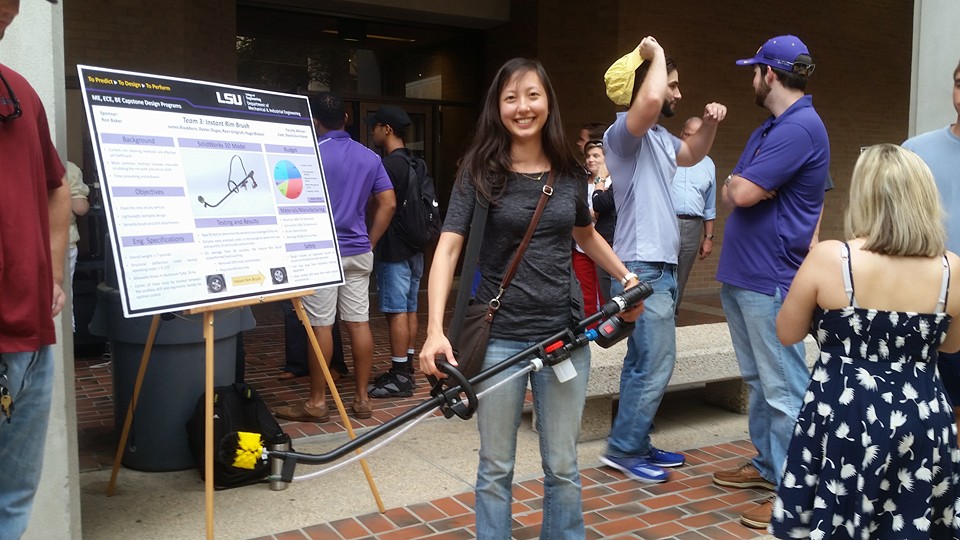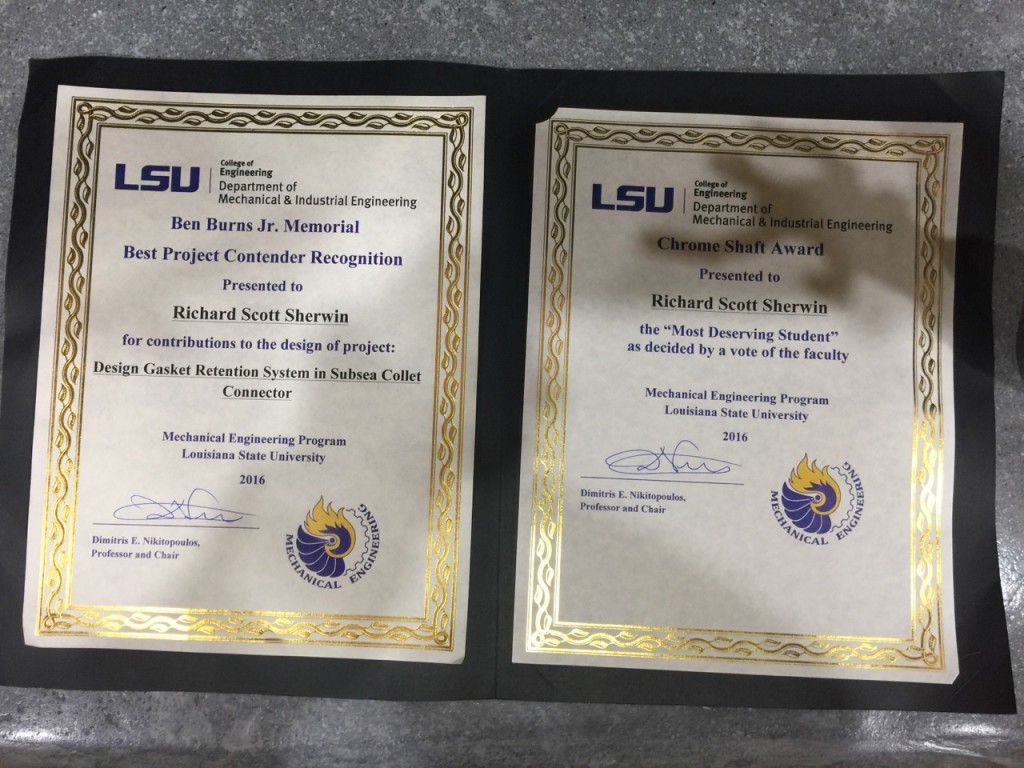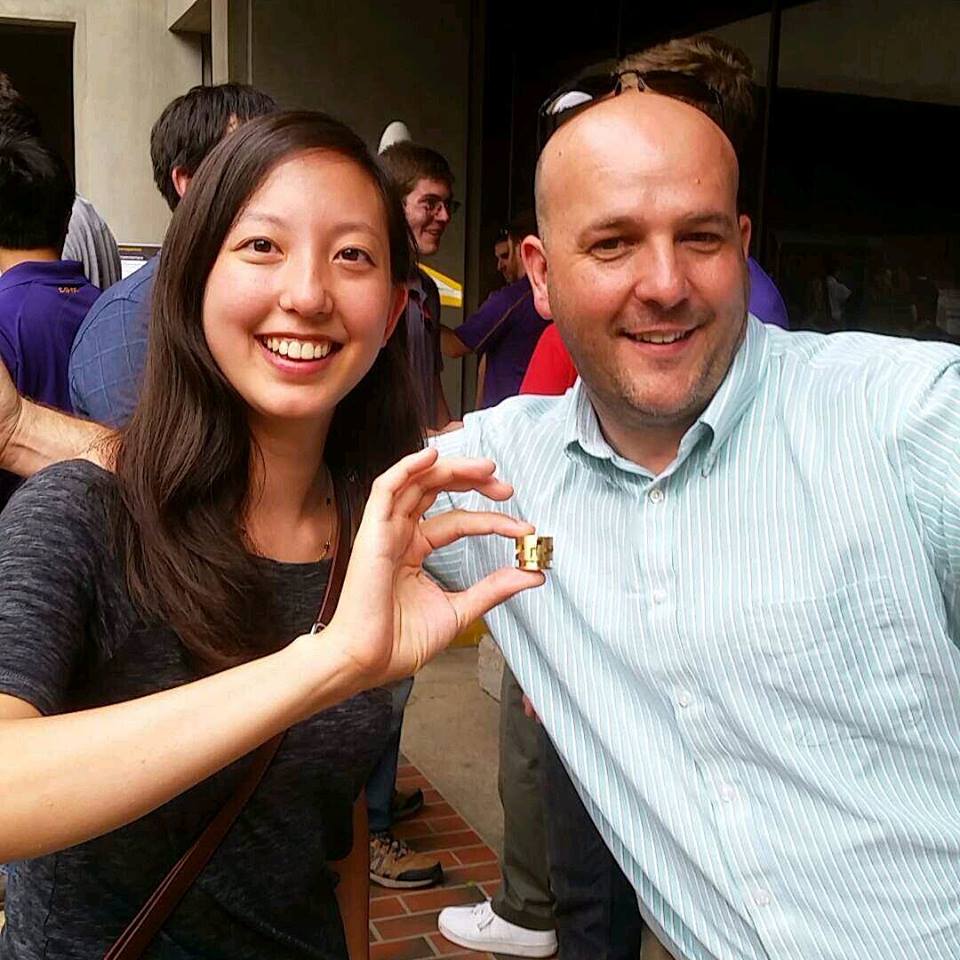LSU’s Capstone program is the culmination of many years of hard work for the mechanical, electrical, and biological engineer students. First semester is the design. Second semester is the build. While a few are R&D projects for professors, most are real-world challenges where people are counting on real outcomes.
The program’s Industry Panel is not just there for the presentations. Most of the panel makes themselves available to the students throughout the year. Often some of the best coaching comes from those working engineers who used their experience to cite ways to improve during the Design presentations.
Richard Sherwin led his team to develop the “Design Gasket Retention System in Subsea Collet Connector” for Cameron Subsea. This was a critical component that needed to function reliably at depths of up to 10,000 feet. His team came to KES multiple times during both semesters to ask for advice and guidance. Our support was just one of the many resources this hard-working team drew upon.
Their team came in as one of the top designs of the semester as a contender for the LSU Ben Burns Memorial “Best Project” Award. Richard was given special recognition for his diligence in seeking guidance and input from the faculty throughout his career. The award, also known as the “Chrome Shaft,” is the same award our principal engineer Bart Kemper, P.E. earned in 1992. Richard was hired immediately after graduation and we wish him continued success.

Linda Cross, EI demonstrates the Automatic Rim Cleaner, a commercial product prototype developed in the 2015-2016 LSU Engineering Capstone program.



Recent Comments